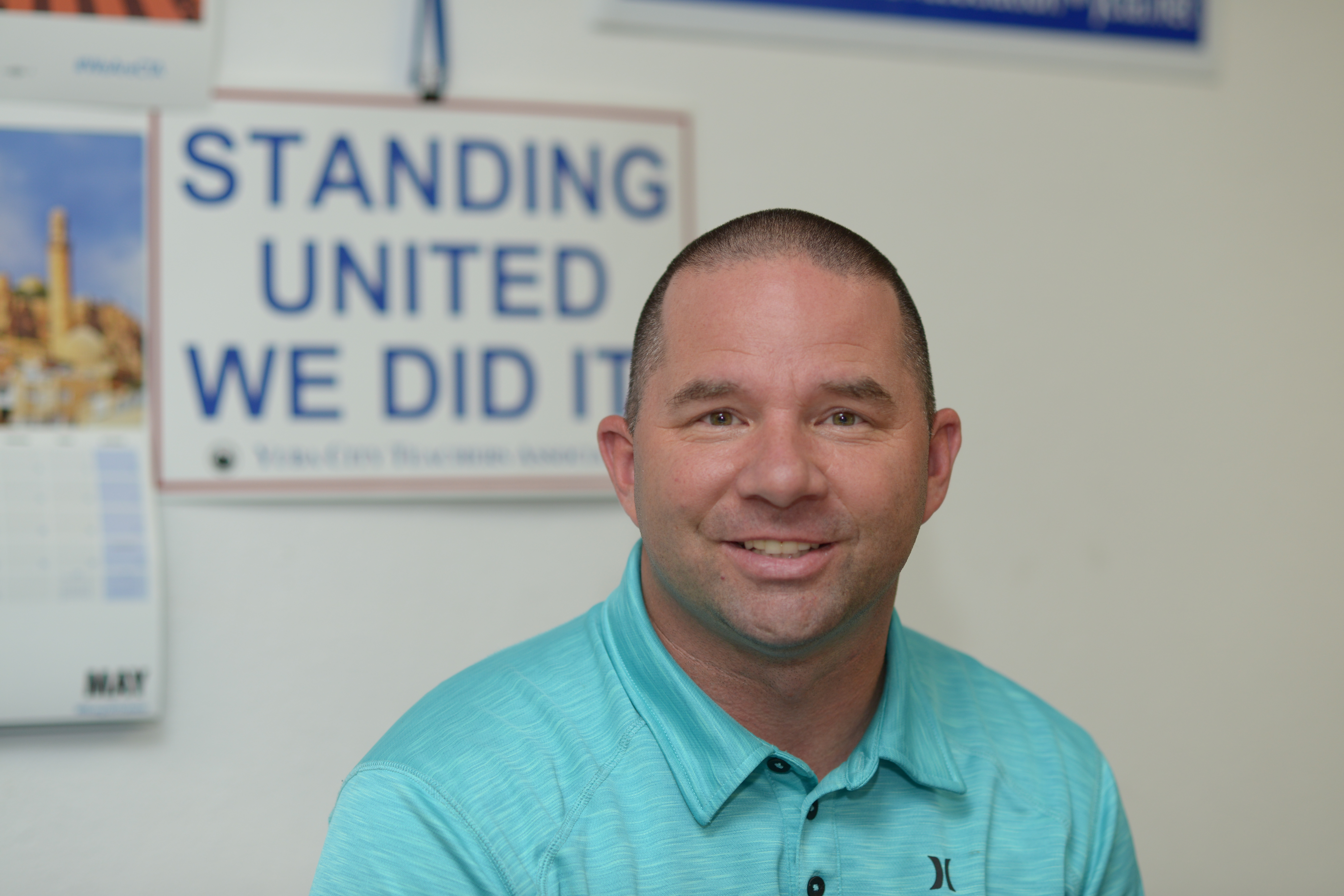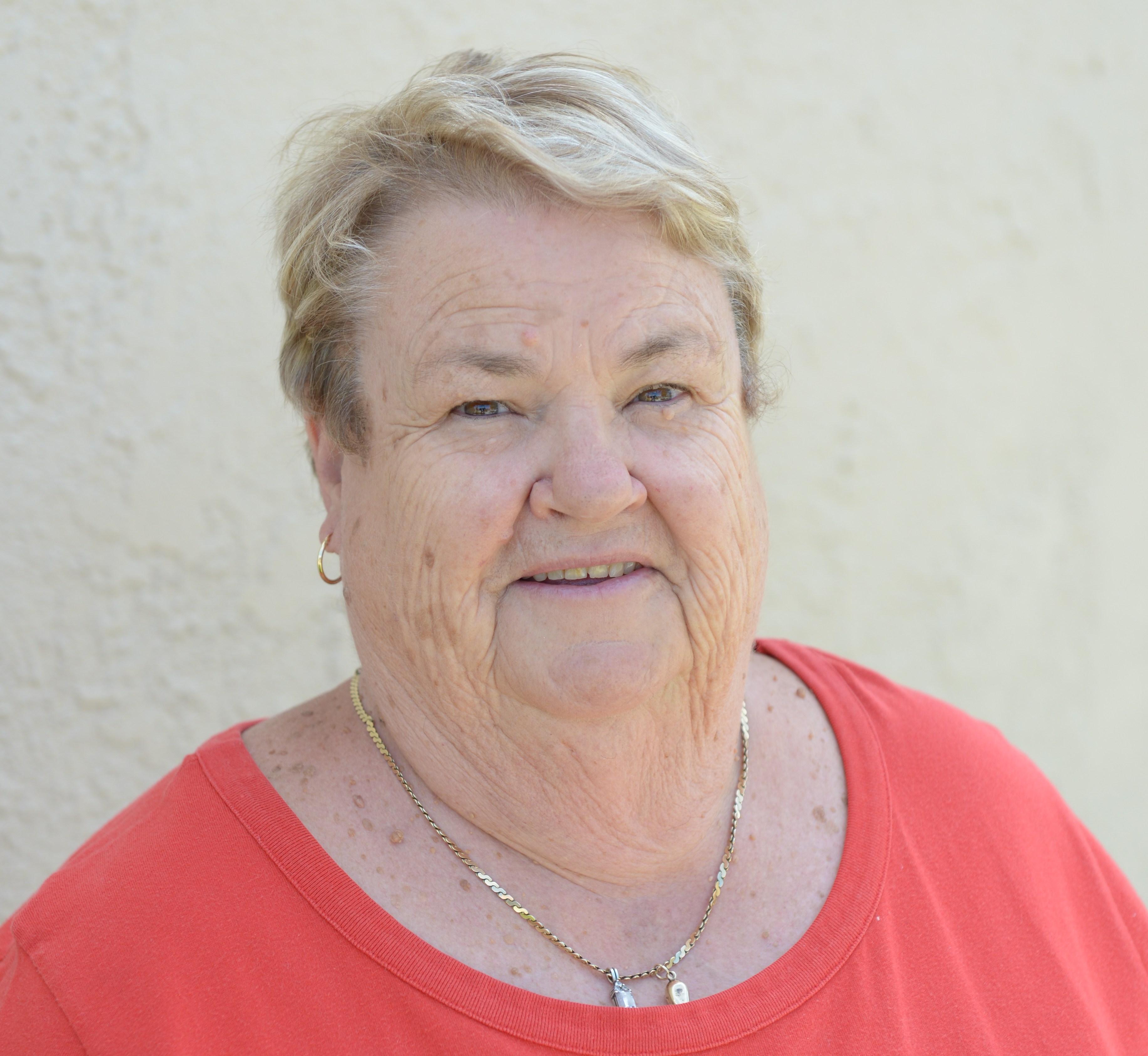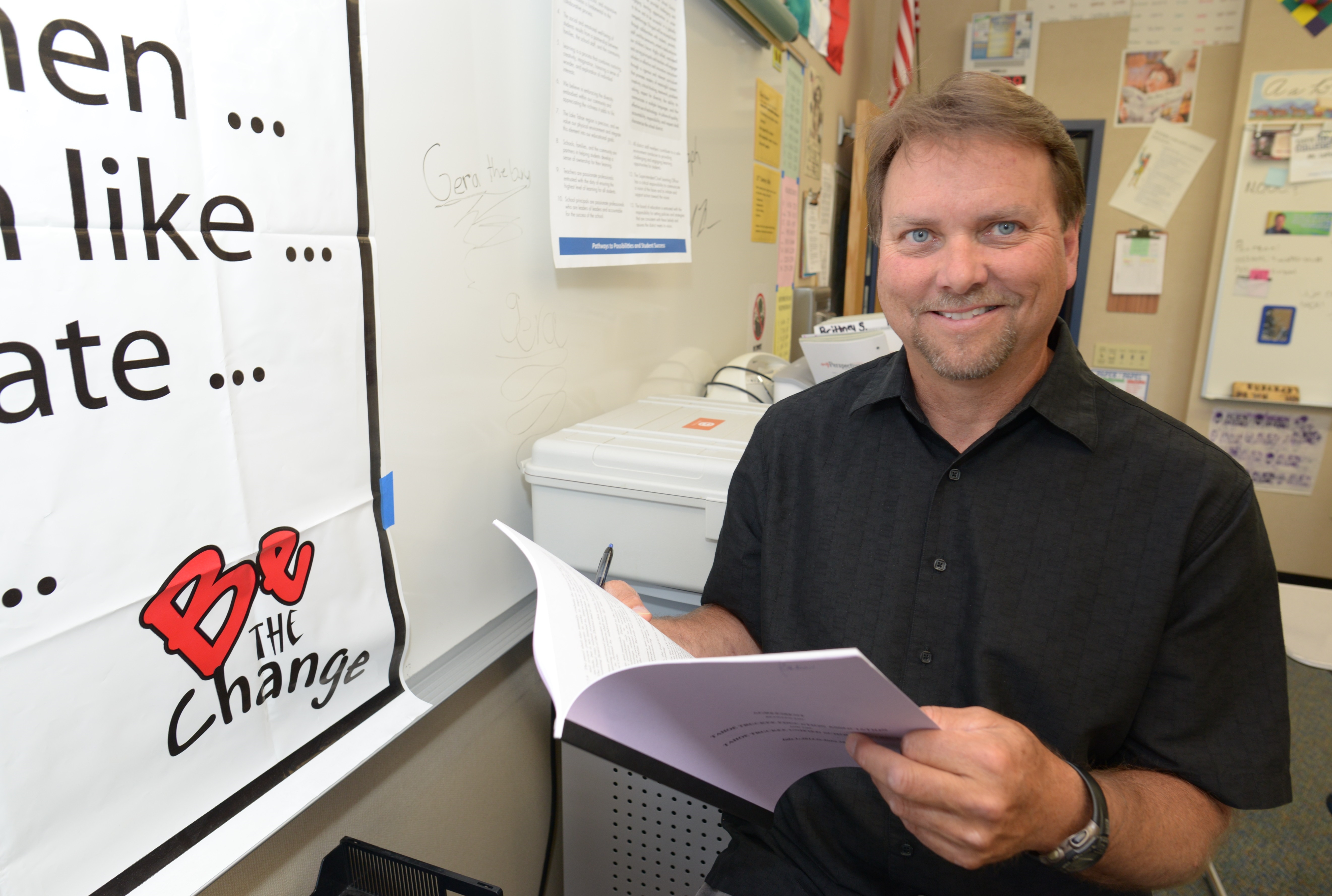Has your district put a cap on class size?
Has it changed to a fairer evaluation system or improved safety conditions?
Have you received a raise in the last few years?
Has your chapter fought district efforts to cut health care or essential positions such as librarians and nurses?
If so, thank your chapter’s bargaining team members, who work behind the scenes in ways that profoundly impact students and CTA members. They spend long hours at the bargaining table with district leaders, sometimes pulling all-nighters and negotiating until they’re blue in the face. And they do it for free, to help ensure that students receive a quality education, and to improve the benefits and working conditions of colleagues.
When educators are paid adequately, it helps retain high-quality teachers. When districts provide educators with good health care, they are better able to serve the needs of students. And those on the bargaining team make that happen.
CTA has more than 1,000 chapters statewide. Educators in each chapter negotiate a contract that covers all members of the bargaining unit, including teachers, librarians, nurses, speech pathologists, counselors and other certificated staff. While a few chapters include both certified and classified staff, there are ESP chapters that support para-educators, bus drivers, janitors, cafeteria workers, administrative assistants, health aides, library technicians and more.
Collective bargaining levels the playing field — educators sit down as equals with administrators, and both sides start the process with initial proposals. Even in tough times, the bargaining process allows educators the means to protect their profession and their compensation.
Once an agreement is reached, it must be ratified by a majority of the chapter’s members, and then by the school board. When the contract expires, the process begins again. (Teachers can strike only if a state mediator is unable to break a bargaining impasse and a nonbinding report from a neutral fact-finder fails to resolve the crisis.)
Meet some of the unsung heroes who serve on CTA chapter bargaining teams.
 Ngozika Anyanwu
Ngozika Anyanwu
Hudnall Elementary School
Inglewood Teachers Association
The fifth-grade teacher joined the bargaining team two years ago after being encouraged by colleagues to become more active. In February 2016, her chapter ratified a contract, and it was an epic moment, Anyanwu recalls, as before then employees had been working without a contract for seven years. That’s because the Inglewood Unified School District has been in state receivership since 2012 to avoid fiscal insolvency. Last year, team members met several times to discuss challenges the district faces, including high teacher turnover and a revolving door of leadership.
A union contract is important because…
it spells everything out, and if something happens that goes against the contract, you can hold people’s feet to the fire and say no, it stops right here. It is an incredibly powerful tool that we need to value, because there are people trying to take collective bargaining rights away in this country.
Good traits for someone on a bargaining team…
are patience and keeping an eye on the prize. You must communicate well, be open and flexible. You have to be able to connect with your members so you know what they want. We are constantly doing surveys, site visits, and asking members about their priorities.
I would encourage someone to be part of their bargaining team…
because it allows you to be part of the positive change that impacts every person in your chapter. It wasn’t an immediate yes for me, because I have two small children. But I’m happy I joined. I have gained so much from being part of the process.
 Derial Mccaw
Derial Mccaw
Riverbend K-8 School
Yuba City Teachers Association
Yuba City Teachers Association members went on strike last September, as the school district struggled with high teacher turnover because of large class size and lower comparable pay. After a week on the picket line, YCTA’s negotiating team hammered out an agreement with the district granting educators pay raises over three years. McCaw, on the bargaining team that helped resolve the crisis, says it was natural for him as a science teacher to play the role of “realist” during tense meetings that sometimes lasted until morning.
I joined my chapter’s bargaining team six years ago…
because I saw stuff that needed attention, and felt that I should be active instead of complaining. Making positive changes for teachers directly impacts students in a positive way, by allowing us to attract and retain good teachers.
Being on a bargaining team…
requires the ability to come up with creative solutions, work as a team, and discover through research whether the other side is being transparent. It puts a demand on your time, which can be challenging when you have a family. But it’s worth it.
Members of our team…
are proud and honored that we were able to make changes that improve working conditions for our members — as well as future members.

Chris Peterson
Modesto High School
Modesto Teachers Association
This history teacher has been on MTA’s bargaining team since 2009 and has been chair since 2011. Like the historical figures he teaches about, he believes it’s important to play a role in shaping policy through public service. MTA’s contract expired in June, and bargaining has gone to impasse. Issues include salary and lowering class size. MTA agreed to cuts during lean times, and Peterson says it’s important for the district to act in good faith and restore cuts when finances are better, which is why class size is now being addressed.
One of the most challenging things…
is building consensus. First you have to unify your negotiating team, or you’ll never be able to convince the other side. Our unit represents teachers, counselors, librarians, speech pathologists, psychologists and more, and it can be a challenge to get everyone on the same page. Then you have to be able to reach across to the other side of the table and convince the district that your goals are in their best interest, too.
Communication is very important…
and listening is more important than being a great orator, because if you don’t know what your membership is asking for, or you don’t understand your district’s point of view, you will never reach a compromise to form a tentative agreement. You must be open and listen to multiple perspectives. That includes helping community members understand that it’s not just about us getting the best contract, but doing what is best for our community.
Members have been supportive…
by wearing green buttons that say they support the bargaining team, and even doing a conga line with drums outside the window during negotiations. It’s been a fantastic source of strength!
 Cindi Lunsford
Cindi Lunsford
Mariposa School of Global Education
Las Virgenes Classified Association
This special ed paraeducator wanted to be in the loop about things happening in her district, so she joined her chapter’s bargaining team five years ago. While salary is always an issue, this year the team will also focus on safety issues and the pay scale. (There are only five steps, so people working 20 years make as much as those hired five years ago.) Lunsford loves the back and forth of the bargaining process, which she calls a dance to balance the best interests of everyone. She is pleased her district finally purchased “comfortable chairs,” because there will be lots of sitting during negotiations this year.
The first year I sat at the table…
I don’t think I said three words. I just listened, learned and tried to absorb as much as I could. It’s kind of daunting at first, and sometimes I had absolutely no idea what they were talking about. But I acted like I did, and now, of course, I’m no longer intimidated. I love having a voice — and sometimes I have a big one.
When you sit at the bargaining table, you must…
think before you talk. Don’t offer up anything you haven’t talked to your colleagues about. You have to be patient. Everybody has to be heard.
I find it rewarding…
when somebody walks up to me and says, “Thank you for taking the time to represent us.” That’s a great feeling.
 Tom Lefevers
Tom Lefevers
North Tahoe High School
Tahoe Truckee Education Association
In February, when district schools closed for a snow day, members of the bargaining team drove through a storm to sit down with the district and negotiate a contract. Fortunately, a deal was hammered out before those in the building got snowed in, says LeFevers, an ELD and English teacher who’s been lead negotiator since 2015. “We wanted to get it done, and I’m very proud of my team for being willing to do that,” he says. The deal offered members a 9 percent increase in wages and health benefits. LeFevers received letters from members thanking him for his service. It almost felt like being in the military, he muses.
I decided to join the bargaining team…
because I felt it was my turn. Over the years I’ve been raising a family and been a coach while others on the bargaining team did great things. I reached a point in my career when most of the kids were out of the house, and I figured it was finally my turn and said OK, I’ll do it.
During negotiations…
you have to stay focused with your game face on. It takes lots of strategizing. You need to be skilled at nuances and watching people on the other team. We look at body language like crossed arms and rolling of eyes, and talk about what it means afterward. We don’t miss much.
As a lead negotiator…
you need to work out an agreement that is best for the majority of your members, and sometimes what you decide may not be popular with everyone. You need to make sure members of the bargaining team put their personal interests aside and do what is best for the common good. Your decisions affect people’s lives much more than I had ever realized.
California Teachers and Collective Bargaining
On Sept. 22, 1975, Gov. Jerry Brown signed CTA-sponsored Senate Bill 160 by state Sen. Al Rodda, known as the Educational Employment Relations Act or the Rodda Act, to give California public school teachers collective bargaining rights and allow them to join in union to strengthen and protect their profession and students’ education. A primary function of CTA and its locals is to represent teachers in negotiating the terms of employment contracts.
Critical job issues within the legal scope of bargaining include compensation, hours of work, safety matters, class size, evaluation and disciplinary procedures, health care, access to personnel files, preparation time, seniority, transfer rights, a grievance procedure with binding arbitration to settle major disputes, discrimination, job assignments, and early retirement.
The school board and the union must review the terms of the existing agreement at least once every three years. As noted by Ed-Data, negotiations can also “discuss problems and address new issues that have arisen during the period of the contract. … [such as] when the Legislature and governor have passed new laws — for example, about school finance or teacher training and evaluation. A district can implement these laws only after the impact has been bargained.”
Each party’s initial bargaining proposal must be presented for public comment at a publicized school board meeting. Any new subjects raised later must be made public within 24 hours. The board must explain the financial impact of any proposed settlement before adopting the final contract.
A signed contract is binding on both the board and the union. It applies to all teachers in the bargaining unit whether or not they are union members. Educators who have joined the union pay union dues. Those who have not joined pay a “fair share” service fee, covering the costs of negotiating pay, benefits and working conditions.
The Discussion 0 comments Post a Comment